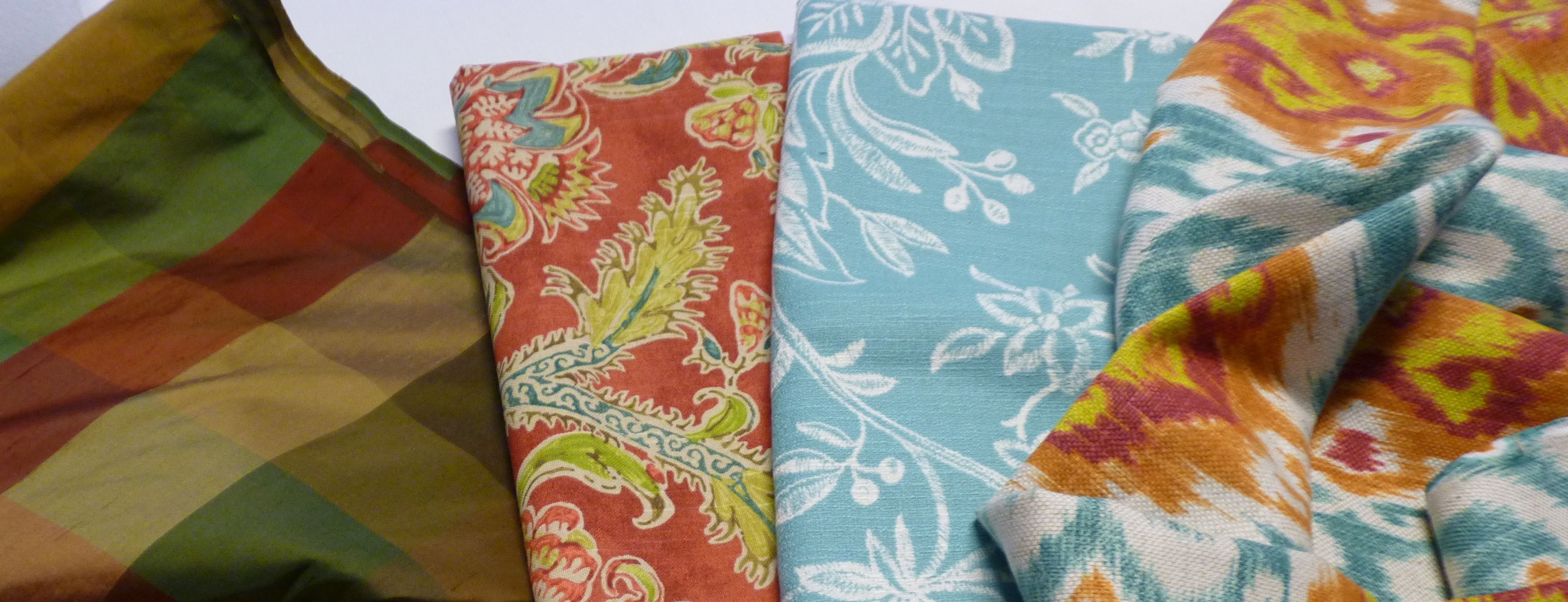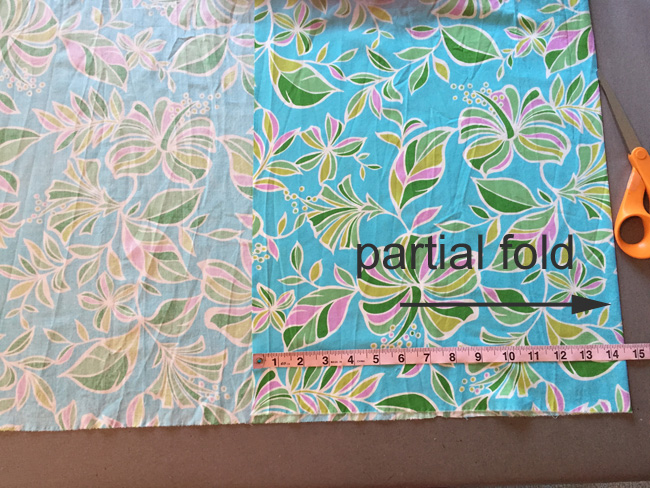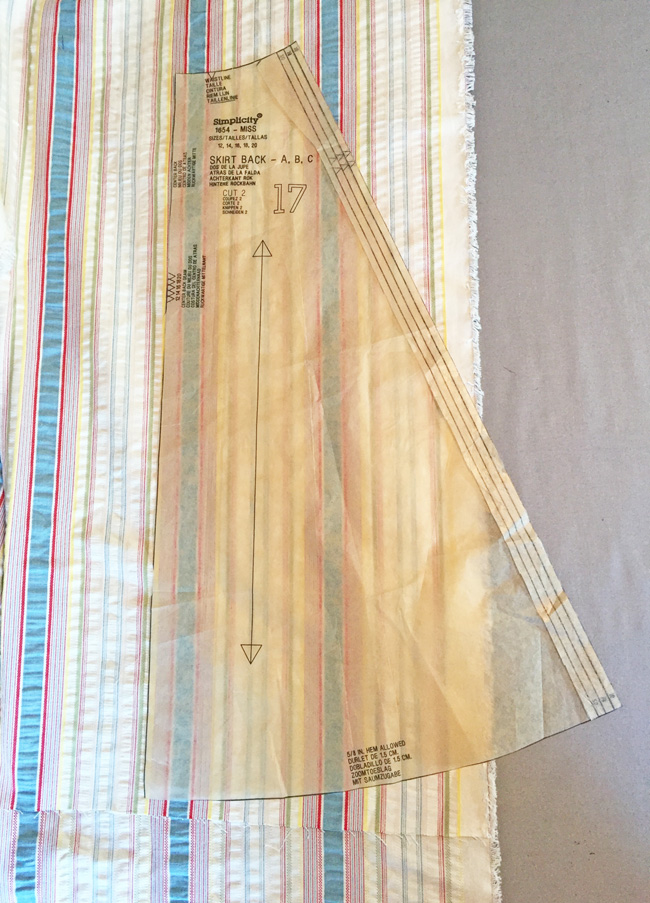We’ve all been there – you have the perfect pattern for a particular fabric but come up just short on the yardage. Good news, with some careful planning and cutting you might be able to use the fabric after all! Here are some helpful cutting tips to help you make the most of your fabric and minimum waste.

Before you begin, consider the length of the finished garment. There’s no need to struggle to fit a pattern onto a piece of fabric and then remove 4 inches in length when you hem it. Adjust your pattern for length before you even cut. Be sure to look at the garment length, and also adjust any facings.
1. Start with the large patterns
Place your largest pattern pieces on the fabric to see how many of them will fit. A skirt will have large pieces that need to be continuous so plan to utilize the fabric on those larger pieces. For the waistband and pocket pieces you can employ other strategies to squeeze them out of your yardage. Play around with the pattern pieces and see where you can fit the smaller items.
2. Use a partial fold

Another way to minimum wasted fabric is to partially fold it. Instead of folding lengthwise and having the selvedges meet, you can fold one edge toward the center of the fabric and have a single layer area where you can cut out sleeves, facings, pockets or other small pattern pieces. By doing this, you can get the fold that you might need for a center front without wasting fabric when cutting.
3. Crosswise fold
Most patterns have you fold the fabric lengthwise, selvedges together to create a double layer of fabric. If your fabric is 45” or even 36” wide, the usable width for pieces not cut on the fold either 22.5” or 18” and that is often not enough, particularly for a full sleeve or skirt.
Instead of folding your fabric lengthwise, fold it crosswise. Fold back the fabric so that the selvedge edges align with themselves and you are working with the full width of the fabric. This will give you the option of laying out the larger pattern pieces on a double layer while taking advantage of the full width of the fabric. If you fabric has directionality in the print or nap (such as corduroy) then you will need to cut the fabric and create two pieces that you will lay on top of each other, each with the print or nap going in the same direction.
4. Double fold toward the center

Use this folding technique to eke out more from your yardage. In fact for knits which are generally 50″ to 60″ wide this is a great way to cut. It’s also helpful for matching stripes as you can easily see all the side seams, which are lined up in the center of the fabric. For the longer pieces, such as a t-shirt front and back, measure the pattern to find the widest part. Fold the selvedge edge of the fabric towards the center at that desired amount. If you do the same for both the front and back, you should have some useful fabric left in the center. You can use that extra fabric to cut out sleeves or collars. Be sure to fold your fabric on grain and check with a tape measure to ensure you have folded it evenly along the length.
5. Cut on a single layer
While this may take more time, cutting a single layer can really maximize every square inch of fabric. Sometimes it’s helpful to make a copy of some pattern pieces so you can have two sleeves, or duplicate the bodice and tape it along the center fold line so you have one flat bodice piece instead of one that is cut on the fold. By shifting and offsetting your pattern pieces you may find that the spaces such as those near the armhole become sections where you can now cut. Again be sure to watch your grain line and cut accordingly.
6. Ignore the grain line
This technique should be used judiciously, but there are times when the pattern piece would fit just right if it was slightly off the grain line. So, see if you can tilt the pattern piece a little bit to make it fit. I would save this technique for very stable fabrics, facings or even sleeves, where a bit of bias won’t be a problem.
7. Cut some pieces on the bias

Along with cutting on a single layer, the pattern puzzle sometimes reveals large swaths of fabric that could be used, even if they are at an angle to the crosswise and lengthwise grain. Bias cut to the rescue! This is a great technique to use with plaids or stripes and gives the garment an extra bit of visual interest.
8. Try piecing

Piecing might sound tricky, but don’t let it scare you! In the example above, the full skirt hangs over the edge of the fabric near the hem. This is an ideal place to piece because it is hardly noticeable, and in this stripe the seams would actually disappear. To piece, create the smaller portion that you would need to add, and be sure to include seam allowances on both the main pattern piece and the additional portion you are piecing onto it.

Share tips, start a discussion or ask one of our experts or other students a question.
No Responses to “8 Clever Tricks for Making the Most of Your Fabric”